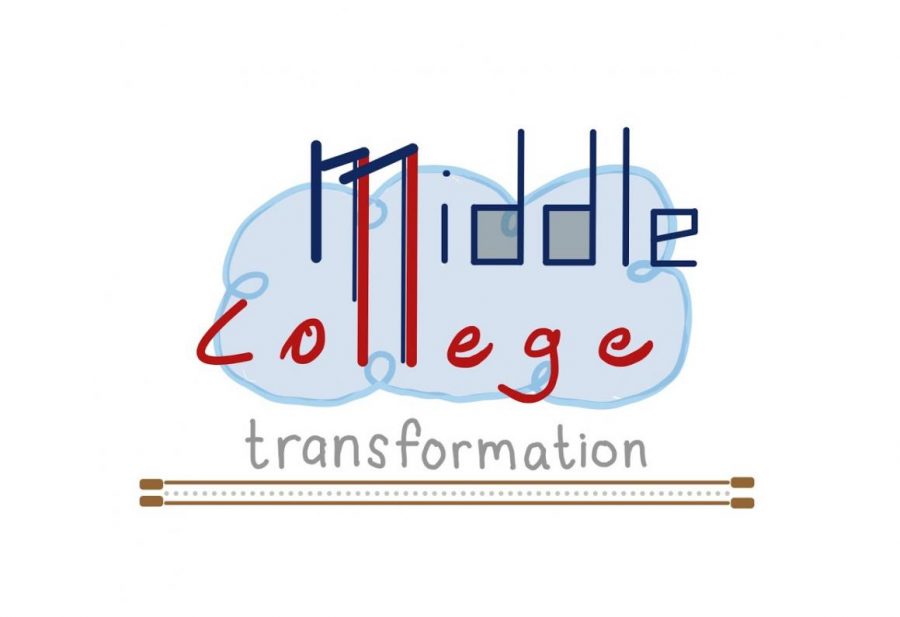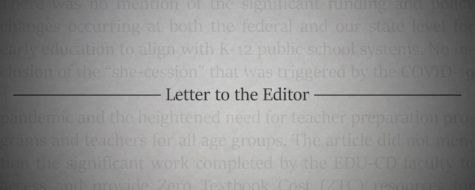Middle College transformation
If you could go back to your junior year of high school, would you take the opportunity to enroll in college classes? Would your high school junior-self crave the environment of a college campus and the resources it offers?
The Middle College program at Skyline College started back in 2015, with a mission to “ensure students graduate from high school and are prepared for college and careers through the integration of high school, college, and career technical education.” Amidst the shelter-in-place and transition to online classes, I was curious to see Middle College’s conditions this semester.
Two years ago, I was a junior at El Camino High School when a letter came in the mail advertising Middle College. I always thought I would spend the rest of my high school years at El Camino, so I was intrigued by the idea that high school students had an opportunity to earn their high school diploma and college credits at the same time. Students were allowed some freedom to enroll in college courses they found interesting or correlated with their career interests. When I went to the orientation and made up my mind, it felt like a life-changing experience — and it was.
Middle College offered all kinds of things that immediately caught my attention. Applying to such a program meant I had a sense of independent control over my own education. The emphasis on student services and support was also something I always felt was lacking at my home high school. But one of the biggest reasons why I felt compelled to enroll was the FREE tuition. Having a single parent, I felt responsible for the cost of my own education and I wanted to relieve that burden from the get-go.
Aside from individual growth, the program also promotes the importance of an academic community unlike anything you’ve ever seen at high school. Martina Goodman is its interim director, who was previously the retention specialist before Dr. Raymond Jones retired from his position as director. Goodman acknowledged the importance of community-building within a group of peers, and explained how breakout rooms are filled with activities and challenges for students to interact with each other.
“The Presidential Debate Party had a good student turnout,” Goodman said. “With dialogue and engagement, it lets students know they can make change.”
It is important to create a space where students can freely express and represent themselves. Communication between students and teachers has always been an essential aspect of the classroom structure. By making sure students are able to share their own ideas, it allows a learning environment in which everyone is exposed to different perspectives and experiences.
Every school year, students are reluctant to ask for help and try to manage their mental health, school and work all by themselves.
“We want our students to get rid of that barrier and be confident with getting help,” Goodman said. “At first students can have A’s and B’s, but online classes can let you slip easily. Once students slip through the cracks, it’s difficult to dig themselves out of that hole.”
Goodman recognizes these students’ concerns with balancing school and life, and encourages them to seek out support.
A Canvas Shell was created for Middle College students that lists out different resources for each students’ circumstances ranging from mental health, virtual office hours and messages to staff, housing assistance, and food services (i.e. Safeway gift cards).
I also interviewed a former Middle College student about their experiences. The student requested to be anonymous when giving their statements.
“There was more organization in the first semester and I felt like I learned more,” the student said.
However, in the following semesters, students “had changed our teachers… They, surprisingly, left one by one, and not that far apart.”
Interestingly, in my previous semester at Middle College, I decided to move back to El Camino, but to take college courses at the same time. I was lucky enough to be excluded from the senior project, CAPSTONE, and only had to take three classes. When I went back to my home high school, I was culture-shocked by how different the teachers and the curriculums were. Slowly, I remembered what high school was like, such as how I was not allowed to wear a hood or a hat in the classrooms — little stuff like that. Plus, the students did not have their own laptops to take notes on or by which to access the assignments. The curriculum was heavily dependent on textbooks and worksheets through which students would have to obtain knowledge through memorization.
However, the experiences I had with Middle College were something that I would never forget. We were students from rival high schools mixed together, each with their own different personalities and interests, but we all had the same goal of graduating high school and taking our dreams to the next level. Most importantly, we had some of the most passionate and caring teachers, mentors, and counselors by our side whenever we needed a boost of self-confidence and reassurance.
Since the five-year Middle College was established at Skyline, the program has witnessed many changes, from students dropping out, to respectable and admired staff leaving one by one, and now with the year of online learning. One significant change that Middle College would like to see happen, however, is the inclusion of schools from the Jefferson Union High School District such as Jefferson High School, Westmoor High School, and Terra Nova High School. So far, only students from San Mateo Union High School District and South San Francisco Unified School District are able to enroll.
Middle College and its students had a fair share of transitions, but the program never loses its focus on its first priority: the students and their success. Goodman would like to tell her current juniors and seniors, as well as the Middle College alumni to “keep (their) heads up and keep pushing. Take it one day at a time and eventually everything will fall into place.”








